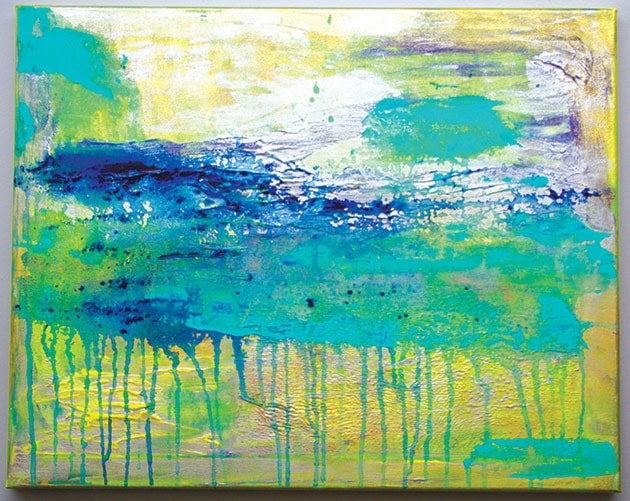I stared at them for several minutes, wondering what to say. I wanted to say something nice, but I couldn’t see the appeal. “I just don’t get it,” I said. “They’re just a mish-mash of colours and drips and stuff. Are they even finished?”
It wasn’t the enthusiastic reply she was hoping for. “Yes, they’re finished. It’s abstract expressionism,” she said before heading off to the bedroom to fold laundry.
“But I don’t know what that is,” I yelled down the hall.
I liked the pieces she had done when we lived overseas – clay water pots and portraits of Arabian women – but these were not like those at all. While I appreciated her renewed interest in painting, I couldn’t understand why she wanted to experiment with a style that had no obvious subject matter.
It would have been easier to tell her the paintings were wonderful, and gone back to making dinner. It would have been easier to be content in not understanding, but the more I looked at my wife’s paintings the more I wanted to understand. So I did some research.
Abstract expressionism developed in the 1940s and 50s in New York when artists filled their canvases with fields of colour and abstract form. Their work was characterized by non-objective imagery that appeared emotionally charged with personal meaning. They valued spontaneity and improvisation.
Abstract expressionism is not about capturing a likeness. Instead, it is about capturing a mood. Because there is not something obvious to focus on, the painter is requesting effort on behalf of the observer. This can be a problem. We prefer things to be easy, and abstract expressionism is a challenge – so much so that many of us feel offended. It is difficult to understand the skill involved. We often assume that abstract expressionism painters are attracted to this style because they can’t produce ‘real’ art.
Over the next few months, I heard many negative comments while my wife was out of earshot – “This is a joke, right?” was one biting remark – but most of these comments were made in frustration. We don’t want to have to think about art. We like paintings of pretty flowers and rolling English hillsides and Neo-Romantic lovers entwined in a castle. Outside of painting, we like our radio-friendly pop music, American laugh-track sitcoms, and our meat and potato dinners. And that’s okay. There is room in this world for the easily understood. But there are others who feel a strong connection to that which isn’t easy – otherwise we wouldn’t have jazz music or blue cheese. We feel the strongest reaction to the most difficult forms of art. Because of the struggle, we feel possessive of it.
I looked at my wife’s paintings again, and tried to let go of my preconceived notions. I asked myself what emotions were triggered by each piece, and I began to see beyond the initial mish-mash of colours and drips. While abstract expressionism is still not my favourite style of painting, I began to appreciate certain pieces.
Perhaps, if nothing else, abstract expressionism has taught Paula about casting out doubt and creating without fear. Though it involves intense emotion and universal truth, this style of art is ultimately about the beauty of creating.
A year and a half ago, Paula changed the back space of our building into The Atelier, an art studio and gallery, where she encourages others to create during drop-in evenings and classes taught by various artists within and outside the valley in different mediums and styles. I tried my hand at painting a little while ago, experimenting with colour and form, and can relay that, despite its loose style, abstract expressionism is harder than it looks.
Time: 5:06 p.m.
Place: The Atelier
